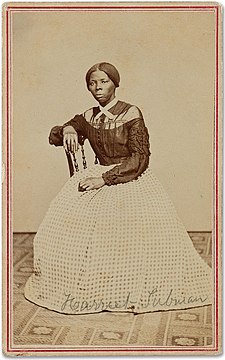| Maryland | Louis C. Fields, President of the African American Tourism Council of MD is the founder of Harriet Ross Tubman Day of Remembrance in the State of Maryland in year 2000. Fields requested former State Senator Clarence Mitchell IV (C4) to introduce legislation to have the State of Maryland designate and annually recognize March 10 as officially Harriet Ross Tubman Day of Remembrance in the State of Maryland. The resolution passed both the House of Delegates and the Maryland Senate in March 2000. Annually, Fields hosts the Tubman Day celebrations across the State of Maryland and on a date closest to March 10, Fields hosts the annual Harriet Ross Tubman Day in Annapolis at the Maryland General Assembly. Annually, the Governor of Maryland issues the State's Harriet Tubman Day Proclamation proclaiming March 10 as Harriet Ross Tubman in MD. Also, each year Fields selects a deserving person to be the recipient of the Harriet Ross Tubman Lifetime Achievement Award presented in the Maryland General Assembly. The program includes an annual Tubman lecture (2016-Dr. Dale Green, MSU professor) and the reading of the Governor's proclamation by a United States Naval Academy Midshipman. President Barack Obama designated a part of Dorchester county as a National Harriet Tubman Park. Past Tubman Day Awardees include... 2016-Janice Greene Curtis, Tubman re-enactor, storyteller. 2015-Dr. Ruth J. Pratt, educator. 2014-Marsha Jews, Planner, Media personality. 2013-Barbara Tagger, NPS administrator. 2012-Senator Barbara Mikulski. 2011-Dr. Clara Smalls, educator. 2010-Delegate Adrienne Jones. 2009-Bettye McLeod. 2008-Verda Day-Jones, actress (deceased) & Louise Webb-historian. 2007-Dr. Kay McElvey, historian, educator. 2006-Wylene Burch, educator, museum founder (deceased). 2005-Delegate Hattie Harrison & Delegate Ruth Kirk (both deceased). 2004-Rachel Hall Brown, educator, author, (deceased). 2003-Evelyn Townsend, educator (deceased). 2002-Addie Richburg, UGRR advocate. 2001-Dr. Thelma Daley, educator, Vice-Chair NCNW. 2000-Dr. Joanne Martin, museum founder update 2017: The March 2017 Maryland Tubman Day program will be held in Annapolis, Maryland to coincide the grand opening of the Harriet Tubman Museum & Discovery Center in Cambridge, Maryland on Tubman Day, March 10, 2017. A Harriet Tubman Underground Railroad Conference is held in Cambridge during June each year. Source: Lou Fields, Founder, Tubman Day in MD. 2016: Governor of Maryland Larry Hogan issued a proclamation which was read by Midshipman from the U.S. Naval Academy. [4] A symposium is held on March 10 at the Harriet Tubman Byway. [5] |


